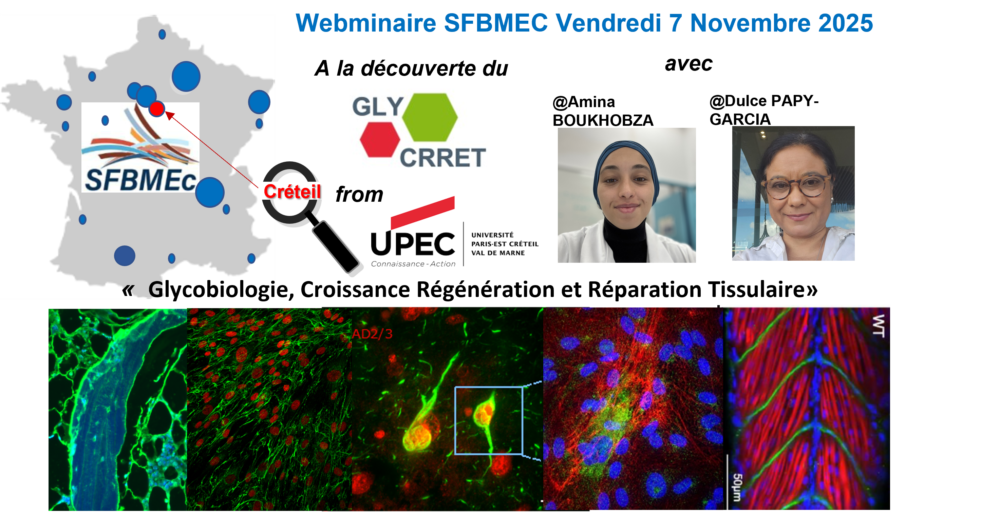 Special Issue Preview: Extracellular Matrix Control of Innate Immunity from Journal of Histochemistry & Cytochemistry
Special Issue Preview: Extracellular Matrix Control of Innate Immunity from Journal of Histochemistry & Cytochemistry
The extracellular matrix (ECM) has long been considered a structural element whose primary role was to define the three-dimensional architecture of tissues. It is now apparent that the ECM is a dynamic structure that undergoes remodeling during tissue morphogenesis and disease to regulate diverse cellular processes, including cellular differentiation, migration and proliferation. As pointed out in the editorial by Stephen Hewitt, the study of the ECM is demanding due to the complexity of the research. Until recently, the lack of the tools required to study the ECM added to the demanding nature of this research. Through the enhancement of existing and development of new research tools and animal models, recent studies show that the ECM contributes to the extracellular-control of numerous cellular processes, providing clear evidence of its critical role in regulating tissue morphogenesis and patterning, tissue homeostasis, and pathogenesis of acute and chronic diseases.
Over the past 15 to 20 years, scientists studying innate immunity have focused on and learned a great deal about the genetic- signaling- and cellular-mechanisms regulating the innate immune response. With increased recognition that extracellular-control of cell function is important, investigators are now providing evidence that specific components of the ECM regulate many of the key processes required for the proper function of innate immunity and tissue inflammation. This includes but is not limited to activation, differentiation, migration, proliferation, and death of immune cells. Due to the emerging evidence that extracellular-control of innate immunity is important, a goal of this special issue is to detail how specific molecules of the ECM – proteoglycans, glycosaminoglycans, and tenascin-C – regulate immune cell function.
To accomplish this goal, the editors and authors of this special issue have included reviews focused on specific topics. This includes a review of select components of the ECM that are Danger Associated Molecular Patterns (DAMPs) that activate innate immune pattern recognition receptors to trigger sterile inflammation. A second review focuses on the ability of proteoglycans and specifically their glycosaminoglycan (GAG) side chains to bind to and provide fine-control of chemokine function and leukocyte migration in tissues. To provide a broader view on the role of the ECM in regulating tissue inflammation, several reviews describe how proteoglycans and GAGs shape the innate immune response in lungs, kidney, brain and intestines. The final review in this special issue details the role of the GAGs, heparan sulfate and heparin, in tissue inflammation and advances the potential development of antiinflammatory strategies using heparan sulfate/heparin biomimetics. It is our hope that the information included in this special issue of the Journal of Histochemistry and Cytochemistry provides scientists with a better understanding of the importance of the ECM in providing fine-control of innate immunity.
Danger-Associated Molecular Patterns Derived From the Extracellular Matrix Provide Temporal Control of Innate Immunity by Charles W. Frevert, Jessica Felgenhauer, Malgorzata Wygrecka, Madalina V. Nastase, and Liliana Schaefer
Proteoglycans as Immunomodulators of the Innate Immune Response to Lung Infection by Inkyung Kang, Mary Y. Chang, Thomas N. Wight, and Charles W. Frevert
Small Leucine-Rich Proteoglycans in Renal Inflammation: Two Sides of the Coin by Madalina V. Nastase, Andrea Janicova, Heiko Roedig, Louise Tzung-Harn Hsieh, Malgorzata Wygrecka, and Liliana Schaefer



















 Following the successful meeting organized last year in May 2014, a special issue of Cell Adhesion & Migration on Tenascins: Defining their role in tissue homeostasis and cancer has been published [Volume 9, Issue 1-2, 2015]. This issue is co-edited by Kim Midwood & Gertraud Orend and you access it on the
Following the successful meeting organized last year in May 2014, a special issue of Cell Adhesion & Migration on Tenascins: Defining their role in tissue homeostasis and cancer has been published [Volume 9, Issue 1-2, 2015]. This issue is co-edited by Kim Midwood & Gertraud Orend and you access it on the  Ladislas Robert, un des fondateurs du Club Français du Tissu Conjonctif qui a été à l’origine de la Société Française de Biologie de la Matrice Extracellulaire, vient d’éditer avec T. Fulop un ouvrage intitulé « Aging Facts and Theories » (Interdisciplinary Topics in Gerontoloy vol. 39, 2014). Il a également rédigé plusieurs chapitres de cet ouvrage dont un intitulé « Aging connective tissues: experimental facts and theoritical considerations ». Je recommande la lecture de ce livre à tous ceux qui travaillent sur le vieillissement bien sûr mais aussi à tous ceux qui souhaitent parfaire leur culture scientifique.
Ladislas Robert, un des fondateurs du Club Français du Tissu Conjonctif qui a été à l’origine de la Société Française de Biologie de la Matrice Extracellulaire, vient d’éditer avec T. Fulop un ouvrage intitulé « Aging Facts and Theories » (Interdisciplinary Topics in Gerontoloy vol. 39, 2014). Il a également rédigé plusieurs chapitres de cet ouvrage dont un intitulé « Aging connective tissues: experimental facts and theoritical considerations ». Je recommande la lecture de ce livre à tous ceux qui travaillent sur le vieillissement bien sûr mais aussi à tous ceux qui souhaitent parfaire leur culture scientifique.